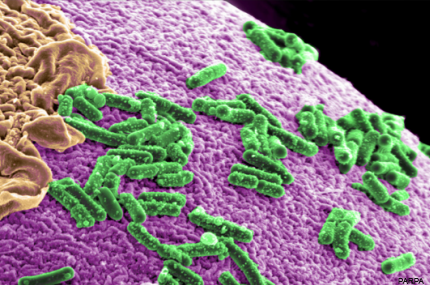Researchers look to unlock the potential of synthetic biology
A DARPA program wants to make engineered organisms, which could create new sensors, coatings, drugs and other products, more robust, stable and safe.

As new synthetic biology techniques become more sophisticated, raising the possibility of things ranging from new fuels to medical treatments, the Defense Advanced Research Projects Agency is creating a new program to deal with challenges inherent to the science.
The goal of DARPA’s Biological Robustness in Complex Settings (BRICS) program is to create a technical foundation for future engineered biological systems that would have improved strategic, industrial and biomedical possibilities, according to a DARPA release.
Synthetic biology, which includes the design, modification and construction of both new and old biological systems, focuses primarily on the genetic manipulation of organisms to perform tasks. For instance, researchers in the UK have developed genetically engineered bacteria that can synthesize molecules similar to those that make up diesel fuel.
But while it shows some promise, the widespread use of synthetic biology remains limited by significant challenges.
First, the modified organisms tend to be fragile – they often require rigid environmental conditions to live. They are also unstable and prone to losing their engineered tasks because of genetic attrition or recombination. As a result of these issues, the costs required for dealing with genetic changes and maintaining specific environments make general use of these organisms unfeasible.
The BRICS program is seeking research and technologies to investigate the key technical thrust areas of stability, safety and robustness of engineered organisms in order to enhance their use in more complex, less controlled environments. Robustness and stability refer to keeping the organisms alive in varying environments while also maintaining their genetic integrity. Meanwhile, the program is also looking to develop safety mechanisms that would control the growth of the engineered organisms.
“By making these systems more robust, stable and safe, BRICS seeks to harness the full range of capabilities at the intersection of engineering and biology,” Program Manager Justin Gallivan said in the release. “These capabilities could include efficient on-demand bio-production of novel drugs, fuels, sensors and coatings; or engineered microbes able to optimize human health by treating or preventing disease.”
DARPA will be hosting a Proposers’ Day on Aug. 21 to introduce potential participants to the goals of the BRICS program. Advanced registration is necessary to attend and will close on Aug. 18.
Meanwhile, the broad agency announcement for the program is expected to be released prior to the Proposers’ Day.
restore soldier’s memoriesadvanced prosthetics

